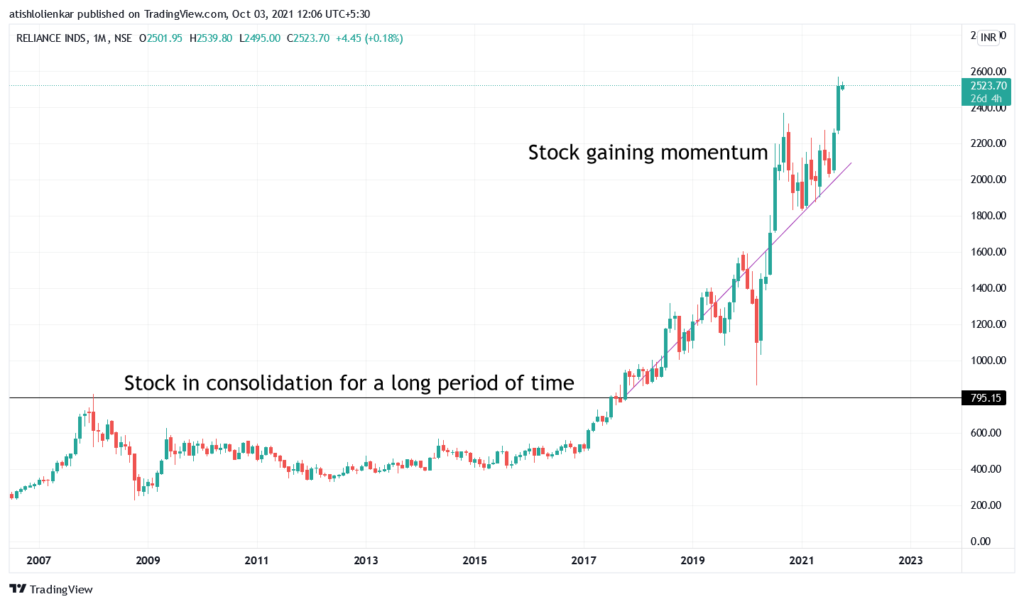Introduction
Swing trading is a type of trading system where the trader engages in carrying his executed trades for more than a day. Swing trader carry’s his position for days, weeks or even months, depending on this style of trading.
Day trading, on the other hand, is a type of trading where the trader squares off his trades before the market closes on the very same day.
Understanding what makes swing trading better than day trading
1. Less losses due to reduced leverage
The greatest disadvantage of day trading makes a sizable advantage for swing trading. Leverage is the additional capital your stock broker gives you for day trading.
For example, if your capital is Rs. 10,000/- then you may get a leverage of 5X, meaning now you can trade with a capital of Rs. 50,000/-. Seems interesting right! The times when you are right you can make a good profit, but needless to say, you can erode up to 50% of your capital when your trade goes against you.
Swing trading doesn’t let the trader be greedy to take leverage. If your risk appetite is losing 2% of your capital every time you go wrong, you are bound to lose only that.
2. Can participate in momentum trading
Momentum trading is in itself a separate topic to be covered and explained. But in short, momentum trading is the type of trading where the trader take the propulsion movement of stock prices.
Example of momentum trading
Consider the chart of Reliance Industries Ltd. given below.

If you observe closely, the stock has been consolidating from 2009 to 2017 in a fixed price range and hasn’t show any movement. But after 2017, when the stock crossed its all time high, the stock price rose from Rs. 800 to Rs. 2500 in a span of 3 years. That is equivalent to more than 300% return in 3 years.
During the time it was gaining momentum, the stock had huge falls in the middle. This can be dangerous to the day traders, as your stop loss can be hit and you may start losing money even if your view was right.
I will be writing a separate blog talking in depth about momentum trading, and how you can use it practically to improve your trading success rate.
Subscribe to my newsletter to receive updates about my upcoming blog posts.
3. Swing trades can be converted to long term investments
Imagine a stock with great fundamentals and has the potential to go up in the next quarter, but has suddenly turned red due to negative global news!
A day trader has no other option then to book his losses and exit the trade. The swing trader, on the other hand can convert his trade into his investment and hold it till the negative news effect vanishes away. During the down trend, he can also buy more to average out the stock price.
A stock with good fundamentals is bound to show good returns gradually over a period of time. A swing trader only needs to be patient enough to wait for those returns.
4. Have much time to decide for counter trade
Swing traders have a decent time to decide the positions of their trades and can take better informed decisions by thoroughly studying the chart and principles.
If the stock is ticking against their view, they have enough time to decide for a counter trade or exit the position before its too late.
Counter trading which is also called pair trading is a method of hedging your current position in such a way that your net loss becomes zero, or very small even if the market moves against your directions.
Day traders have to be very quick with their decisions. A slight delay in their decision can be enough to land yourself some handful losses.
5. Save money on brokerage
Day traders tend to take as many as 10 trades daily, which accounts to substantial amount of profits getting added to your brokerage. Thereby reducing your overall gains.
Swing traders, on the other hand, tend to take positional trades. In today’s world of discount brokers like Zerodha and Upstox charge zero brokerage on delivery trades. This gives the swing traders an edge over day traders to save on the brokerage fees.
6. Identify long term repetitive patterns
History tends to repeat itself, and so does stock price movements. Every stock has a similar pattern on how it moves. For example, IT stocks tend to reflect its price movements on currency depreciation.
Likewise, identifying the stock pattern and executing trades in their favor can help swing traders take the influence of those patterns and improve their profit potential.
Day traders cannot take advantage of repetitive pattern as the daily price movements are mostly irrelevant to any price action and are mostly influenced by local market news and overall index trend.
7. Part time trading
Swing trading can be executed by working professionals, students and part time traders. One need not be in front of the computer screen day in and day out. The trader needs to place the trades and accordingly and plan the action plan in the near future. Thus living a stress free life.
Part time traders should definitely avoid day trading. One black swan event is enough to erode your past profits and your capital if not handled properly.
Conclusion
When I say swing trading is all great and wonderful, I don’t mean to criticize day trading. Treat day trading like driving an F1 car. You can’t drive an F1 car the day you sit on it. One needs to thoroughly practice it, control the car at high speeds and give it some time till you finally get good at it.
The same concept applies to day trading.
Start your trading journey by opening an account with Upstox today!

